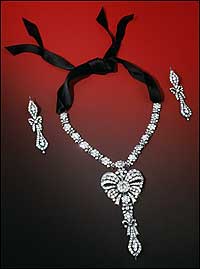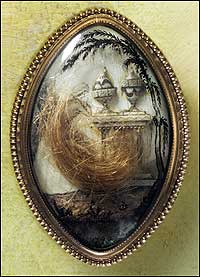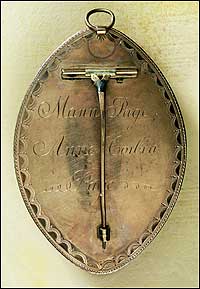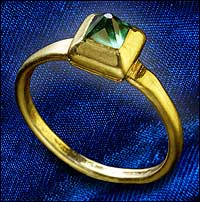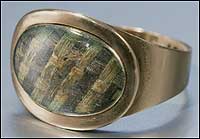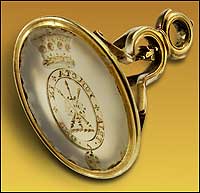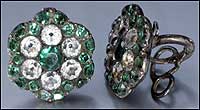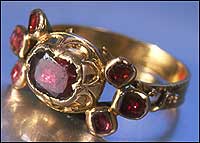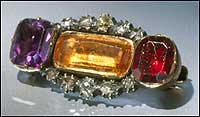Aesthetic Appeal
by Marilyn S. Melchor
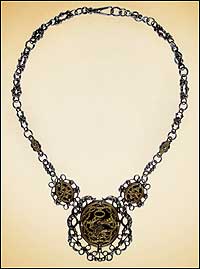
"Pinchbeck" means counterfeit, a derivation from the copper-and-zinc alloy of that name formulated to look like gold. Here, pinchbeck and finely cut steel fashion a mid-eighteenth-century English necklace, birds and garlands in attendance. - Photo by Tom Green
Deep in the vaults of Colonial Williamsburg's DeWitt Wallace Collections and Conservation Building rests a small but precious sampling of eighteenth- and nineteenth-century jewelry. The pieces are valued more for their beauty, or their historical associations, than their monetary worth. Precious and semiprecious stones - diamonds, rubies, emeralds, topaz, and garnets - were as highly prized in the colonial period as they are today, as were gold and silver. Yet some of the most attractive items were what we would call costume jewelry and were valued entirely for their aesthetic appeal.
Begun fifty years ago, the collection has fewer than one hundred items. More than half are rings, most worn in mourning for someone deceased. Mourning jewelry - which includes brooches and lockets - sometimes incorporates hair from the deceased, decoratively woven or part of a cipher or picture. Among the rings is one believed to hold the hair of George Washington.
The photos on these pages are of selections from the group - jewelry of everyday and special wear, and paste, gem, and nonstone items that demonstrate the range of selection for the consumer, the skill of the artisan, and the appeal of the objects. Several can be seen in the larger exhibit Jewelry: The Colonial Williamsburg Collection at the DeWitt Wallace Decorative Arts Museum. It runs through December 2003.
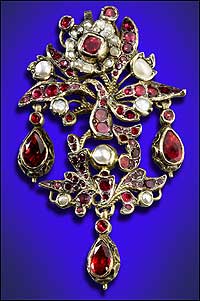
Missing two of its pendants, a pinchbeck brooch from mid-eighteenth-century England is an openwork floral spray whose leaves are set with half pearls and garnets. - Photo by Tom Green
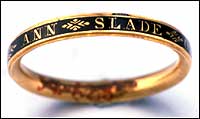
This simple gold and black enamel ring is a circa 1767 English mourning ring that was likely commissioned to commemorate the life of Ann Slade, who died in West Pennard, Somerset, England at the age of 27 on 12 May 1767. The information engraved on the ring is that found on most surviving mourning rings: name, age at death, and date of death. Usually, the letters "AET" which stand for "age at death" in Latin, and "OBT," meaning "date of death," are engraved after the name of the deceased. A ring commemorating Martha Slade is also part of the collection, but the relationship between Ann and Martha Slade is unknown.

